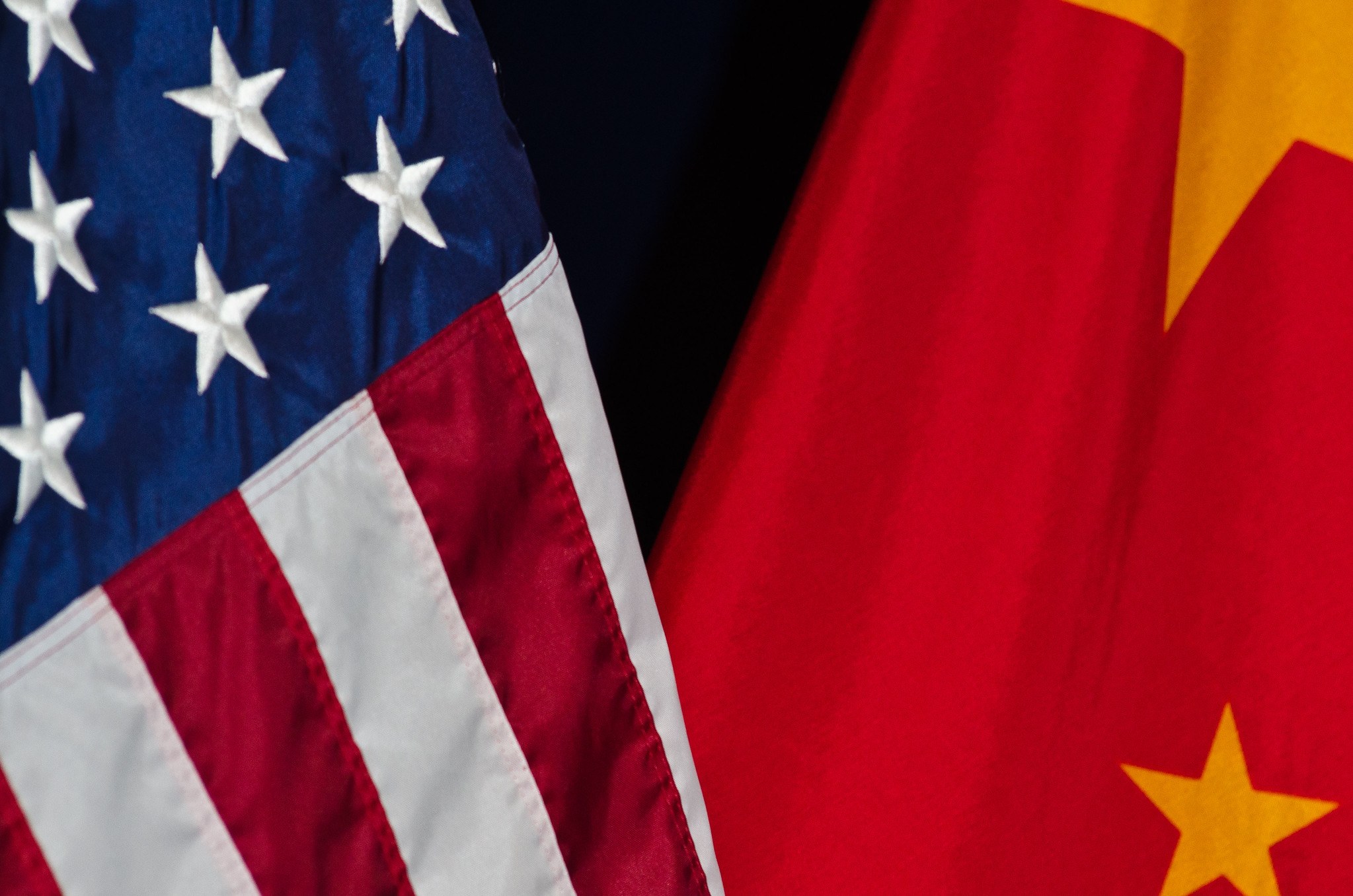The Missing Piece in America’s Strategy for Techno-Economic Rivalry with China

Published by The Lawfare Institute
in Cooperation With

The steady stream of U.S. senior officials traveling to Beijing in the past few months has underscored the administration’s quest for a fresh approach to navigating the economic and technological rivalry between the United States and China. As the world closely observes these diplomatic exchanges, a question looms large: Are traditional methods of engagement effective in addressing the growing challenges posed by China’s techno-economic malpractice to U.S. economic interests and those of other democratic market economies?
China employs an array of market-distorting tactics we have described elsewhere as innovation mercantilism and brute force economics to gain dominance in sectors that matter for economic competitiveness and national security. These include steel, solar panels, drones, shipbuilding, pharmaceutical ingredients, high-speed rail, and telecommunications equipment, among others. Tactics include market access restrictions, massive industrial subsidies that fuel overcapacity, technology transfer requirements for market access, preferential financing and procurement contracts for domestic firms, intellectual property theft, cyber- and human-enabled espionage, coercion and bullying, forced labor and other poor labor conditions, and other market-distorting policies.
By all available evidence, Beijing is intent on continuing to employ these mercantilist practices to acquire leadership positions in virtually every emerging and advanced industry that matters for the future, including some that have garnered significant attention in Washington, like artificial intelligence (AI), aerospace, semiconductors, biotechnology, networking technologies, and electric vehicles and batteries, as well as others that have attracted less attention but are nonetheless critical, such as cloud computing, flat panel displays, advanced materials, autonomous systems, and LiDAR technology.
To be sure, the United States and its allies and partners also have their sights set on competing in advanced technology sectors, and they have increasingly embraced forms of government economic activism and industrial strategy to do so. Many countries, including the United States, have used domestic subsidies, for example. But China is an outlier, subsidizing strategic industries on a scale that far exceeds its peers. The recent reorientation in U.S. economic statecraft can be viewed as a measured and even belated response to the Chinese government’s consistent manipulation of its domestic market as a tool of geoeconomic statecraft and its serious shortfalls in meeting a broad range of its World Trade Organization (WTO) commitments and responsibilities.
The consequences for China’s trade partners and the international economic system are acute. By creating an unfair sales advantage with policies like closed markets and selling below costs (namely, dumping), China diverts resources away from non-Chinese firms, leading to death spirals like those witnessed with Nortel and Lucent in the 2000s and U.S. and European solar panel makers in the 2010s. Moreover, the Chinese government’s strategy of promoting state-engendered monopolization in advanced industries puts a serious drag on innovation globally.
U.S. policymakers increasingly favor a combination of “promote” and “protect” measures to counter Beijing’s economic playbook. They widely acknowledge that promoting domestic competitiveness is crucial. Significant examples of progress include bipartisan interest in legislating AI to achieve its full potential while addressing risks, as well as legislative achievements like the CHIPS and Science Act and the Inflation Reduction Act, both signed into law in 2022, authorizing large investments in American semiconductor and green energy production and research. However, America faces a rival that has been sprinting for decades and is now surpassing the United States in a range of technologies. In other words, the U.S. “promote” agenda is needed, but somewhat late to the party.
On the “protect” front, many observers acknowledge that more work is needed to protect cutting-edge U.S. technology from exploitation by strategic adversaries, though debate continues around the appropriate height of the fence and size of the garden, to paraphrase the Biden administration’s catchphrase. Key “protect” actions include export controls to limit China’s access to advanced technologies (such as AI chips and semiconductor equipment) with military applications, persuading Japan and the Netherlands to adopt similar controls, bolstering inbound investment screening, and placing new restrictions and notification requirements on China-bound investments involving certain dual-use technologies. But again, these controls offer limited defense against China’s broader techno-industrial campaigns—for instance, its pursuit of global market dominance in mainstream semiconductors, essential in sectors from automobiles and aircraft to medical devices.
These measures are important and will continue to evolve to meet the requirements of strategic competition. But to date, policymakers, legislators, and analysts have largely overlooked a third element in the strategic agenda that could prove vital to safeguarding U.S. and allied competitive advantages in advanced technologies: pooling market demand. Establishing the conditions for the emergence of “demand alliances,” either formal or informal, focused on particular advanced technologies or inputs, could potentially insulate markets from subsidized and protected Chinese goods while increasing cross-border transactions among like-minded participants.
Market demand pooling efforts would ideally focus on advanced technology sectors characterized by high fixed costs relative to marginal costs, like semiconductor manufacturing, aerospace, and AI. These industries require substantial upfront costs before they can commence production and exhibit strong economies of scale. As governments increasingly invest in domestic competitiveness and pursue de-risking strategies to ensure long-run resilience, the United States has the opportunity to lead other market economies in a pooling agenda that limits China’s ability to profit from industrial predation—the techno-economic equivalent of an allied missile defense system. With the right tools and sufficient political will, America and its allies and partners can begin to redirect demand away from the Chinese market—which is becoming increasingly hostile to foreign market participants anyway—toward its own market and other market economies that reciprocate by limiting China’s market access. By adopting a pooling agenda, market economies have the opportunity to ensure that domestic firms compete on a level playing field.
Policies to support this agenda include reciprocal trade agreements to increase trade with allies, alongside tariffs to impose a price floor on Chinese product dumping—in sectors such as critical minerals—to enable market-based firms to compete. Other strategies include export credits that enable firms coerced out of the Chinese market to find alternative markets and financial support for companies shifting production out of China (a step Japan has already taken). Further steps to redirect demand include import restrictions, labeling requirements, security certifications for critical infrastructure components, and leveraging government demand with procurement policies.
As a tangible first step for market demand pooling, Congress can amend Section 337 of the U.S. International Trade Commission’s (USITC) statute, which allows for the restriction of goods produced using stolen intellectual property or benefiting from other unfair trade practices. The amendment could make it easier to exclude goods and services from companies that benefit systemically from interventionist trade practices, as many Chinese firms do. This reform agenda could empower the USITC to refocus Section 337 away from patent disputes among multinational companies toward curbing the profitability of China’s unfair trade practices.
Many observers will object to moving toward pooling market demand, accusing the United States of protectionist withdrawal. Why not rely on a traditional global free trade approach? That was the right approach before China doubled down on innovation mercantilism; market demand pooling is a second-best option from a pure economic efficiency perspective. But the first-best option—a global multilateral approach to free trade—is untenable given China’s willingness to exploit U.S. market access while also “blocking the U.S. from the Chinese market through measures largely outside of the WTO’s supervision and enforcement mechanisms.” As the 2022 U.S. Trade Representative (USTR) Report to Congress on China’s WTO compliance plainly suggests, and demonstrates in exhaustive detail, “China has a long record of violating, disregarding and evading WTO rules.” Moreover, virtually no multinational firms will support a WTO case against China, much less complain in the press, for fear of retaliation from the Chinese government. Even when WTO cases are successful, the damage is already done and China’s innovation mercantilism continues. As such, the 20th century dichotomy of free trade and protectionism seems increasingly outdated.
On the other side of the spectrum, domestic skeptics of international trade agreements could reasonably need persuading that increased trade with allies and partners, and less with China, can benefit American workers. But much of the recent opposition to trade, especially in the heartland, is not about trade in general; few object to trade with countries like Canada and South Korea. Rather, China’s trade tactics that have led to the deterioration of the U.S. manufacturing sector have prompted valid concerns. As long as future trade agreements are truly reciprocal, skeptics should embrace them.
Yet another set of skeptics, the “just run faster” crowd, will argue for abandoning industries that China dominates and concentrating instead on America’s strength: pioneering the next big innovations. But this is wishful thinking. America’s innovation prowess did not prevent the collapse of U.S. market share in technologies pioneered in the United States—such as telecommunications equipment, solar panels, and electric vehicle batteries—amid an onslaught from China. Focusing solely on new tech won’t sustain a robust U.S. advanced technology ecosystem over the long term. The globalization of supply chains has been a good thing from a cost-effectiveness perspective, but outsourcing has also severed the link between production and innovation, which a pooling agenda could begin to restore.
The U.S. and its allies need to ensure they remain in the lead in critical technologies like semiconductors. Emerging microelectronics paradigms—like 3D heterogeneous integration, silicon photonics, and neuromorphic computing—could define a post-Moore’s Law world. However, if China seizes legacy chip production and erodes U.S. semiconductor sales, it will shrink U.S. companies’ revenues and degrade America’s overall semiconductor capabilities, giving China significant leverage. Likewise, in other critical and cutting-edge sectors like biotech, aerospace, and generative AI, where the United States currently leads, policymakers can’t afford complacency, because China is gaining rapidly.
Such measures don’t seem so drastic when considering how diplomatic efforts to try and encourage Beijing to adopt market-oriented reforms have failed over the years. Decades of attempts, including bilateral forums like the Strategic and Economic Dialogue and the Joint Commission on Commerce and Trade, have not been able to inspire substantial market-oriented reforms that could help China avoid the middle-income trap and level the playing field for foreign firms. To the contrary, China’s leaders have moved away from market-oriented reforms and doubled down on goals outlined in the Made in China 2025 plan in 2015 to dominate key global industries and increase foreign dependence. In 2020, Chinese President Xi Jinping declared, “We must tighten international production chains’ dependence on China, forming powerful countermeasures and deterrent capabilities based on artificially cutting off supply to foreigners.” Dialogues with Beijing may offer short-term reassurances, but they fall short of addressing fundamental challenges. At worst, they create bureaucratic incentives for the United States to delay tough actions to protect national security. They are, to paraphrase Muhammad Ali, a rope-a-dope strategy China engages in to deflect real pressure.
To prevent a significant erosion of their competitive edge in advanced industries, the United States and its allies must take decisive action on all three fronts—promotion, protection, and pooling. China’s rapid progress and the nature of innovation industries, where gaining competitive advantage can tip the balance decisively, give many advantages to China. But by leveraging their collective market power, America and its allies and partners can chart a path toward preserving and enhancing their positions in these critical sectors.




